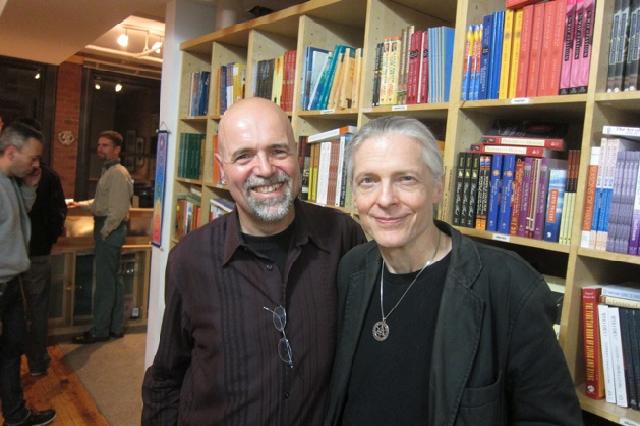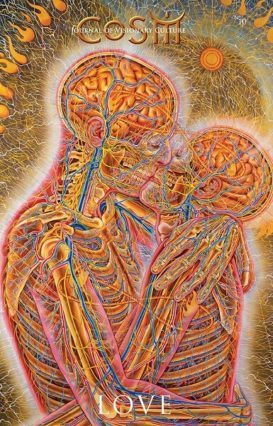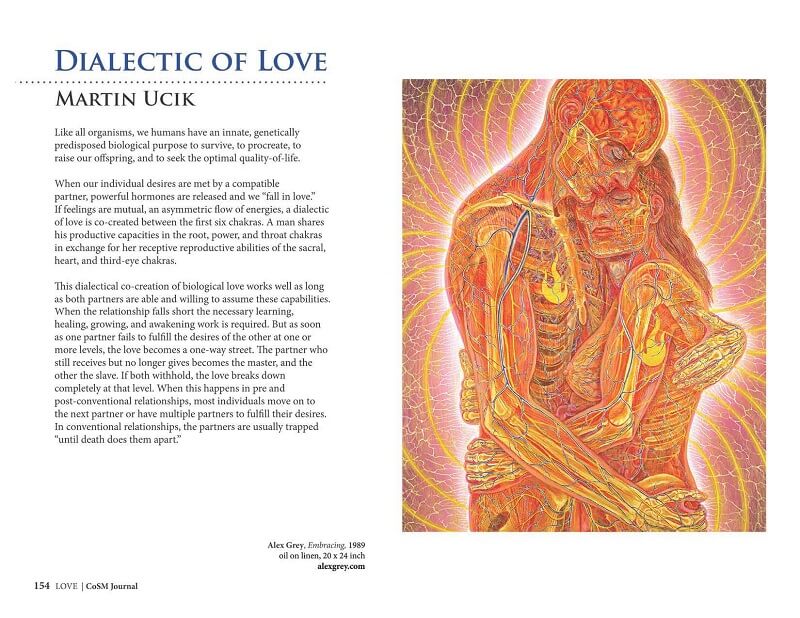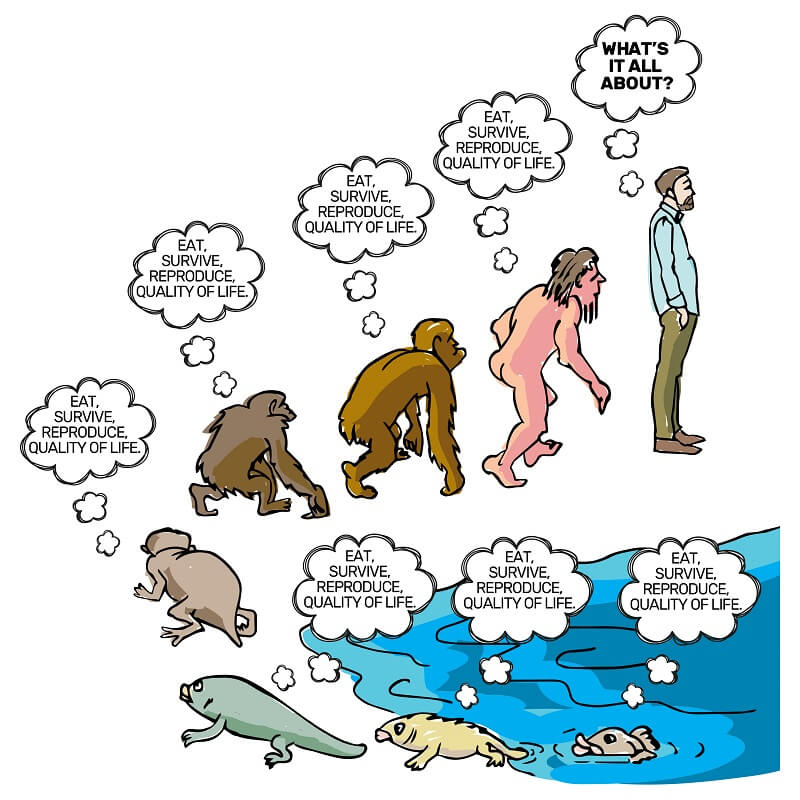I am very honored that world-renowned artists Alex and Allyson Grey invited me to contribute an article about the Dialectic of Love to their COSM Journal of Visionary Culture #10 about LOVE.
You can order your copy at https://shop.cosm.org/collections/books/products/cosm-journal-10


Alex Grey and Martin Ucik
In this and forthcoming blogs, I will provide more details about the article that describes how we can shift the Dialectic of Love from need-based asymmetrical transactional love to being-based symmetrical transcendental love by sharing our transcendental purpose at the level of all seven chakras (as described in my new book Sex Purpose Love: Couples in Integral Relationships Creating a Better World).

We humans have two purposes:
Our Biological Purpose or “biological imperative,” which we share with all living beings, and our Transcendental Purpose, which is unique to humans.
Our Biological Purpose is to perpetuate our existence through self-sustaining processes such as eating, metabolizing, procreation, territorialism, competition, cooperation, quality-of-life seeking, group forming, and agency, as shown in the picture below.

As long as we only live our Biological Purpose, our desires in a love relationship are most effectively fulfilled when males compete, produce, protect, and create, and females choose, reproduce, care, and direct.
Read more about our Biological Purpose in Sex Purpose Love page
These three pairs of mutually compatible asymmetrical desires or love between males and females (sex in exchange for safety, heart in exchange for power, and intuition and wisdom in exchange for creativity) nicely map onto the first six of the seven chakras as summarized below, with the seventh chakra representing the differentiated unity of the couple.

Transactional Love along six of the seven chakras
First-chakra male providing in exchange for second-chakra female sexuality:
This pair of desires is related to and guided by instinctive processes in the reptilian parts of our brain, where the vital drives for survival and procreation are located.
Third-chakra male protection/safety/status in exchange for fourth-chakra female care:
This pair of desires is related to and guided by the unconscious limbic parts of our brains, where emotional memories of behaviors that made us feel safe, loved and connected are stored, as are our traumatic experiences.
Fifth-chakra male self-expression and creativity in exchange for sixth-chakra female intuition, inspiration, and wisdom:
The highest pair of desires is related to and guided by the neocortex of our brains, which allows for the development of self-consciousness, human language, autobiographical memory, abstract thought, and imagination.
All of these exchanges are biologically driven, and socially and culturally conditioned, as indicated by the Lower Left and Lower Right quadrants. By using the chakra system, we see that the female reward for the male contribution is always located in the next higher chakra.
The fulfillment of the divergent male and female desires leads to the Asymmetric Dialectic of Transactional Love as shown in the image above.
Couples in these asymmetric transactional relationships have actually little to no choice over the levels of passion, dependence, and intimacy that they feel towards their partner, which explains the various and diverging intensities of falling and being in love after one or more of the partner’s desires are met. Most people interpret these naturally arising hormone-driven loving feelings (or chemistry) to arise naturally (which in fact they do) to indicate to them that they have found, attracted, or called in “The One” or their “soulmate,” and they expect this chemistry to last forever (which it doesn’t). In all three instances, the love is asymmetrical and transactional, because both partners objectify each other and use each other as a means to fulfill their biologically and psychologically programmed, and culturally conditioned needs and desires. We therefore also speak of desire or need-based love relationships.
Master-Slave Relationships
We could now think that in an ideal love relationship, which most of us dream of, partners would lovingly recognize and give each other what they need and desire along the level of the six chakra pairs and the seventh chakra as described above.
Yet on second thought, we realize that there are two problems with that thought:
The first problem, as we know from our own love-life and the stories of others, is that those needs that make us feel loved when fulfilled by our partner, and all those needs and desires of our partner that we help to fulfill, are manifold and change over time. We grow older. We may have children. And over time, it can happen that individuals develop to the next higher stage of consciousness, or they progress in other developmental lines, for example, sexually, spiritually, morally, or physically. Or we go through major changes by undergoing some psychological healing, for example, around our Anima or Animus complex or other shadows and wounds.
The second and even larger problem in a Hegelian sense is that receivers who get everything they desire would either now have made it their own or destroyed what made their partner desirable in the first place, and what they needed to differentiate themselves. At the same time, the givers would no longer be an object of desire, if they freely gave or lost what made them desirable in the first place.
As a result, as Hegel pointed out, these need and desire-based relationships are not stable. A man who would give all his material resources and income to a woman to have her meet his desire for sex in exchange may no longer be attractive to her. Similarly, once she would have augmented her status through him by becoming a princess or queen, or Frau Doktor, his status would become less of an attractor. The same would hold true if he augmented her quality of life through his creativity that meets all her desires. He may still be creative, but she may no longer desire it and thus no longer provide her support and wisdom to him.
On the other hand, a woman who would liberally meet her partner’s desire for sex, care and wisdom/intuition, may lose her attractiveness and be no longer provided for, protected, and inspired in the ways she desires, as the male could get what he wants without having to satisfy her desires in return. In other words, he would own her and thus, again in the somewhat obscure Hegelian sense, destroyed what he initially desired and needed to define himself.
In order to overcome this problem in transactional love relationships, a dialectic emerges in which females—because of their deep seated fears of abandonment and desire to have their quality of life improved—constantly challenge males through negation, or what Hegel called sublation, in the material, power, and creativity domains to improve and provide more. Men experience this as “yes, but” and nagging, and demands to constantly improve and do better in order to be desirable.
This forces males—because of their shame of not being good enough to get sex, care/approval, and intuition/wisdom—to come up with ever better solutions to provide females with increasing amounts of material resources, safety, status and creativity.
Females often feel under enormous pressure to constantly increase their sexual attractiveness and skills, their ability to care, and their capacity to provide ongoing wisdom and intuition to remain attractive and get what they desire from males. A look at magazines and commercials that cater to each sex provide ample and vivid examples of the demands that are put on each sex to become and stay desirable as mates.
On further investigation of need and desire-based love relationships, we see that they are fragile and can get quickly out of balance. The one whose desires are no longer met could now either leave the relationship, or suck it up. As long as leaving is not an option because of personal circumstances (such as children, or financial, emotional or sexual dependence), societal pressures (traditional marriage, public shame, discrimination, etc.), or fears of abandonment and the resulting emotional pain caused by hormonal withdrawal symptoms (being heartbroken), the one who still provides but no longer receives will become the slave and the other the master.
A woman may be forced to be sexually available without being adequately provided for, be expected to show recognition, appreciation and care without feeling safe and protected, or offer her intuition and wisdom while no longer being creatively inspired and entertained by her partner. A man who still provides, protects and inspires may no longer be rewarded with sex, care, and intuition.
While transactional love relationships are a great opportunity for learning, healing and growing, and to learn to give and receive love (unconditionally), they often become exhausting for couples who are not able or willing to do this kind of work, and simply want the ongoing perfect romance. They either descend into frustrating power struggles, endless fights, or passive-aggressive behaviors, which can lead to physical and mental abuse, or they can try to get their unfulfilled needs and desires met outside the relationship. Both typically lead to devastating and painful separations and divorces. Consequently, an increasing number of modern and postmodern people get divorced and become serial daters who chase one romance after the next through calling in “The Next One,” and then consciously (or hatefully) uncouple when their partner is no longer desirable, as we see prominently in the broken marriages of Hollywood star couples, less visibly in many family court rooms around the world, and in the scores of people who have given up on love relationships altogether.
We can therefore say that need-based and desire-driven transactional love relationships have two phases at the level of each chakra pair.
The first phase is the involuntary emergence of loving feelings in various degrees of sexual passion, emotional dependence, and verbal intimacy, which in combination lead to one of the eight forms of being in love as indicated by the “triangles of love” in Part 1 of Sex Purpose Love and Integral Relationships: A Manual for Men.
The second phase is the actual capacity to love, which is the ability and willingness of each partner to fulfill the other’s needs and desires in kind and degree after the love-struck phase has passed, and to receive his/her gifts with openness, gratitude and appreciation, instead of rejecting them or taking them for granted. Both capacities, to give and to receive well, are part and parcel of transcending fear—which is the opposite of love. As Rumi wrote, “Our task is not to seek for love, but merely to seek and find all the barriers within ourselves that we have built against it.“
See more details in Sex Purpose Love page 323 to 389.
The next newsletter and blog post will describe Transcendental Love Relationships.
